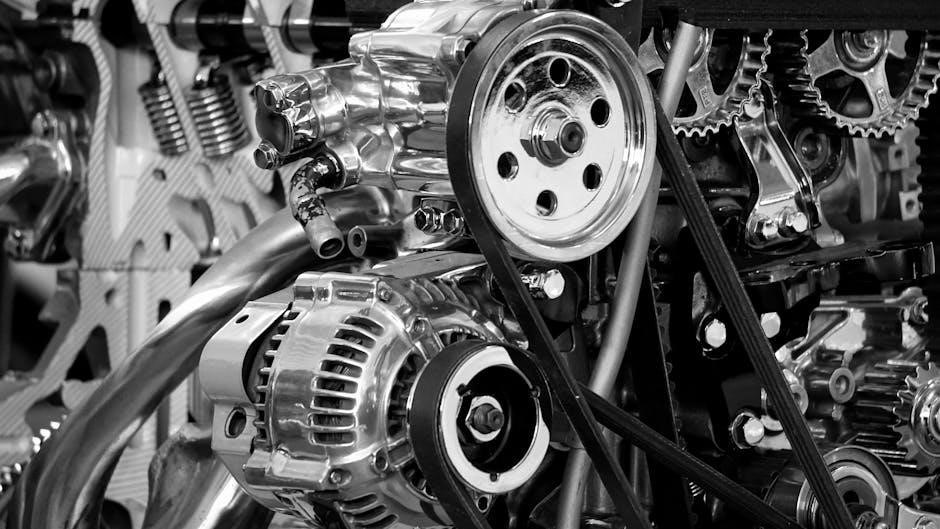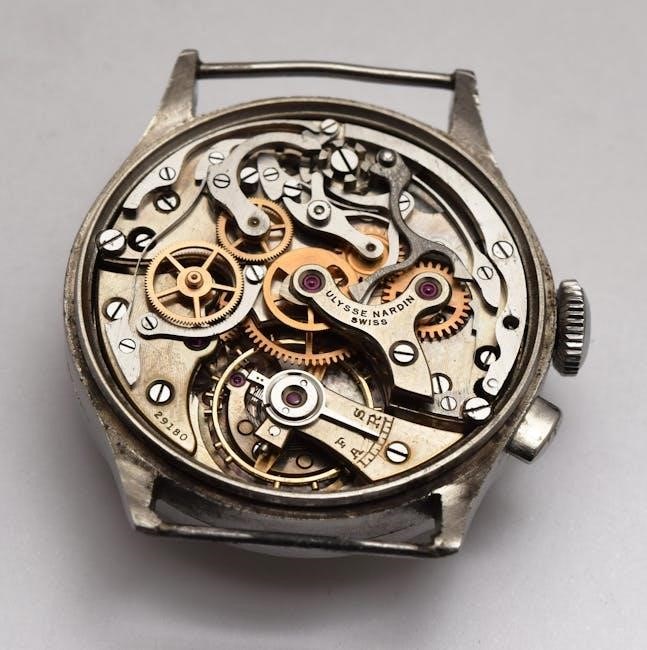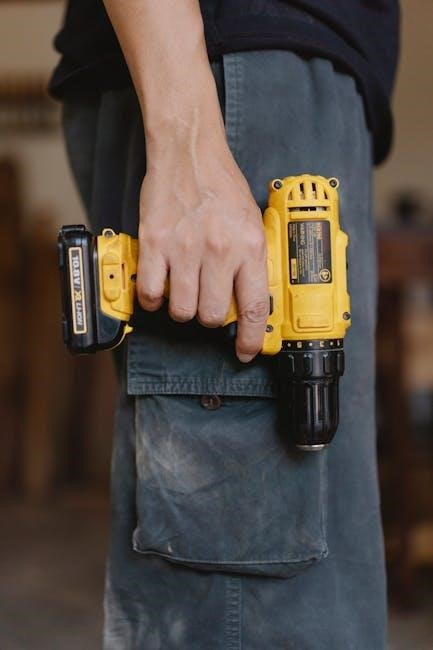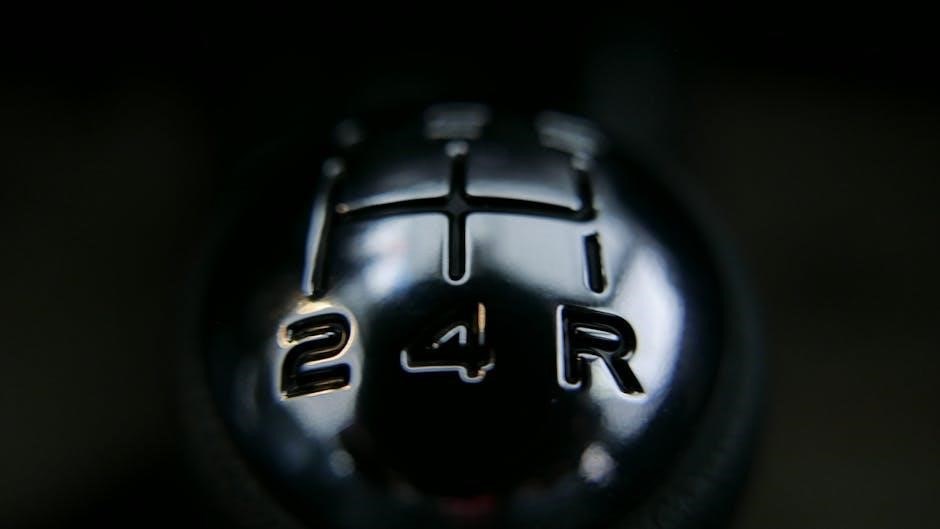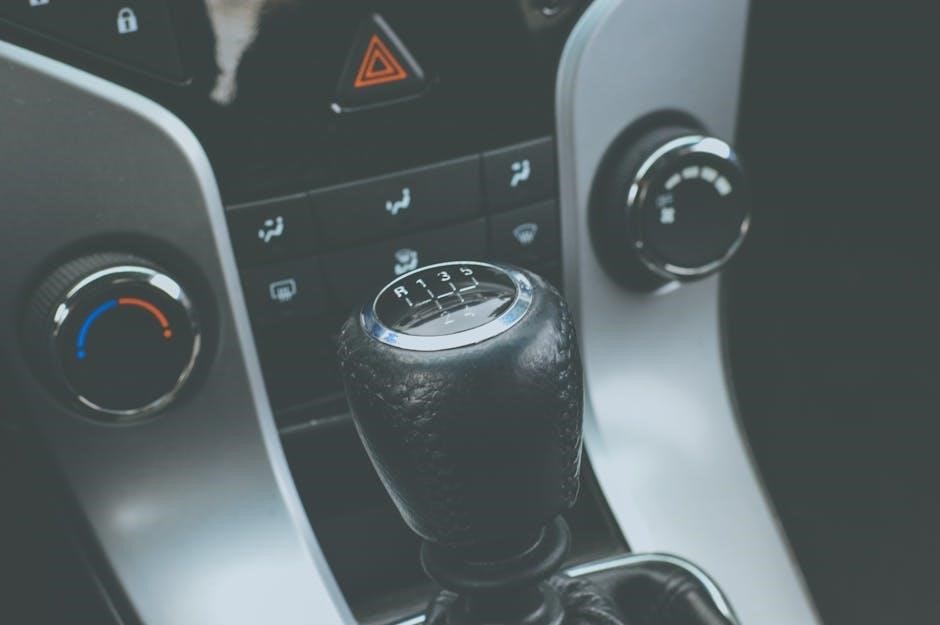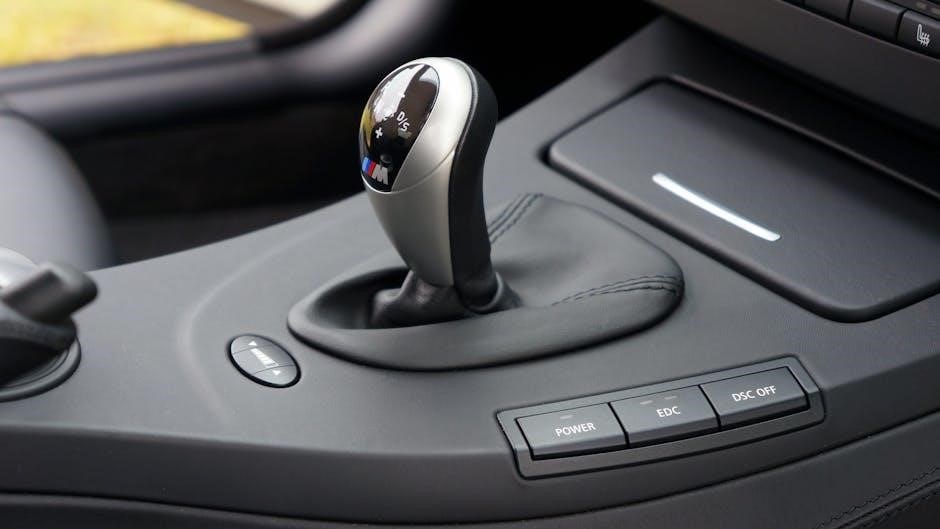pdms-2 scoring manual pdf
The PDMS-2 Scoring Manual is a standardized guide for assessing motor skills in children from birth to 5 years. It provides detailed instructions for accurate scoring and interpretation of both gross and fine motor development, ensuring reliable results for professionals.
1.1 Overview of the PDMS-2
The Peabody Developmental Motor Scales, Second Edition (PDMS-2), is a standardized assessment tool designed to evaluate motor skills in children from birth to 5 years. It focuses on both gross and fine motor development, providing a comprehensive measure of a child’s physical abilities. The PDMS-2 consists of six subtests: Reflexes, Stationary, Locomotion, Object Manipulation, Grasping, and Visual-Motor Integration. These subtests assess various motor skills, such as automatic reactions, balance, movement, and hand-eye coordination. The assessment is widely used by professionals to identify developmental delays and plan interventions. Its structured format ensures consistency and reliability in evaluating young children’s motor development.
1.2 Importance of the Scoring Manual
The PDMS-2 Scoring Manual is essential for ensuring accurate and consistent evaluation of motor skills in children. It provides clear instructions for scoring subtests, determining entry points, and interpreting results. The manual helps professionals understand how to document scores on profile/summary forms and use raw data effectively. It also outlines basal and ceiling levels, which streamline the assessment process. By following the manual, examiners can ensure reliability and validity in scoring, making it a critical tool for identifying developmental delays and planning interventions. Its detailed guidance supports professionals in administering the test effectively and interpreting results to inform decisions about a child’s motor development.

Structure of the PDMS-2 Assessment
The PDMS-2 assessment comprises two scales: Gross Motor and Fine Motor, each with specific subtests. Designed for children from birth to 5 years, it evaluates motor development through six subtests, providing a comprehensive overview of a child’s motor skills.
2.1 Gross Motor Scales
The PDMS-2 Gross Motor Scales assess large muscle groups and fundamental movement skills. These include reflexes, stationary, locomotion, and object manipulation. Reflexes measure automatic reactions in infants, while stationary assesses balance and posture. Locomotion evaluates walking, running, and jumping, and object manipulation involves ball skills and coordination. Each subtest is age-specific, starting from birth to 5 years, ensuring comprehensive evaluation of motor development. The scales provide detailed scoring criteria, basal and ceiling levels, and norm-referenced scores to identify developmental delays or advanced abilities. This structure allows professionals to track progress and plan interventions effectively, ensuring accurate and meaningful assessments of motor skills.
2.2 Fine Motor Scales
The PDMS-2 Fine Motor Scales evaluate small muscle coordination and dexterity, focusing on tasks like grasping, manipulating objects, and using utensils. These scales include subtests such as Grasping and Visual-Motor Integration, which assess hand-eye coordination and precision. The scoring manual provides clear criteria for rating performances, ensuring consistency and accuracy. Fine motor skills are crucial for daily activities, and the PDMS-2 offers age-specific benchmarks to identify developmental progress or delays. Professionals use these scores to design targeted interventions, promoting improved fine motor abilities in children from birth to 5 years. The detailed scoring guide ensures reliable and valid assessments, aiding in early identification and support for motor development.
2.3 Subtests and Their Objectives
The PDMS-2 consists of six subtests, each designed to measure specific motor skills in children. Reflexes assess automatic reactions in infants, while Stationary evaluates balance and control. Locomotion measures walking and movement abilities. Object Manipulation and Grasping focus on hand function and coordination. Visual-Motor Integration evaluates eye-hand coordination. These subtests provide a comprehensive understanding of a child’s motor development, guiding professionals in identifying strengths, delays, and areas for intervention. The scoring manual ensures each subtest is administered and scored consistently, offering clear objectives for accurate assessment and reliable results.
Administration of the PDMS-2
The PDMS-2 requires careful preparation, including gathering materials and understanding subtest instructions. Examiners must follow standardized procedures to ensure accurate and reliable assessment of motor skills in children.
3.1 Preparing for Test Administration
Preparing for PDMS-2 administration involves gathering necessary materials, such as manipulatives and recording forms. Ensure a quiet, child-friendly environment to minimize distractions. Examiners must review the manual to understand subtest instructions and scoring criteria. Familiarize yourself with the test items and their proper demonstration. Verify the child’s chronological age to determine appropriate entry points for subtests. Organize all materials beforehand to maintain a smooth testing flow. For new examiners, consider having an experienced professional observe and assist with scoring and interpretation. Allow time for the child to become comfortable with the setting before beginning the assessment.
3.2 Instructions for Conducting Subtests
Conducting PDMS-2 subtests requires careful adherence to standardized procedures. Begin by determining the child’s chronological age to identify the appropriate entry point for each subtest. Administer items in the specified order, scoring each on a 0-2 scale based on predefined criteria. Ensure the child is comfortable and engaged throughout the process. Demonstrate items clearly and provide necessary support without aiding performance. Score reflexes, stationary, locomotion, and object manipulation tasks objectively, noting basal (three consecutive scores of 2) and ceiling levels (three consecutive zeros). Transition smoothly between subtests to maintain the child’s focus and ensure accurate results. Follow manual instructions precisely to uphold test validity and reliability.
3.4 Materials and Equipment Required
The PDMS-2 requires specific materials for accurate test administration. These include a flat, non-slip surface for motor tasks, a stopwatch for timing, and manipulatives like balls, blocks, and toys. Some items, such as a small cup and spoon, are necessary for fine motor assessments. Ensure all materials are clean and age-appropriate. Refer to the Examiner’s Manual for a detailed list of required items. Additional tools, like a pencil and scoring forms, are essential for documenting results. Familiarize yourself with each item’s purpose to ensure smooth test administration. Acquire any materials not included in the kit beforehand, as specified in the manual, to avoid delays during testing sessions.

Scoring the PDMS-2
Scoring the PDMS-2 involves applying standardized criteria to evaluate motor skills, ensuring accurate and reliable results. It includes determining entry points, basal, and ceiling levels, then converting raw scores into norm-referenced results.
4.1 Understanding Scoring Criteria
Understanding the scoring criteria is essential for accurate PDMS-2 assessment. Each subtest item is scored on a 0-2 scale, reflecting the child’s mastery level. A score of 2 indicates mastery, 1 partial mastery, and 0 for inability to perform. Criteria are based on normative data, ensuring consistency across examiners. Detailed descriptions in the manual guide examiners to apply scores objectively. Proper training and adherence to these criteria are crucial for reliable results, ensuring valid interpretation of a child’s motor development. This standardized approach minimizes variability, making the PDMS-2 a trustworthy tool for assessing motor skills in young children.
4.2 Determining Entry Points and Basal/ceiling Levels
Determining entry points and basal/ceiling levels is crucial for efficient PDMS-2 administration. Entry points are based on the child’s chronological age, aligning with the normative sample. A basal level is established when a child scores 2 on three consecutive items, indicating mastery of all prior skills. Conversely, a ceiling level is reached when a child scores 0 on three consecutive items, suggesting the end of their current skill range. This process ensures testing is tailored to the child’s abilities, avoiding unnecessary items and focusing on their developmental range. Accurate determination of these levels enhances the assessment’s efficiency and validity.
4.3 Raw Score Conversion and Interpretation
Raw scores from the PDMS-2 subtests are converted into standard scores using tables provided in the manual. These standard scores are compared to normative data to determine the child’s motor development relative to peers. The Total Motor Quotient (TMQ) is calculated by combining gross and fine motor scores, providing an overall measure of motor ability. Interpretation involves analyzing standard scores, percentile ranks, and confidence intervals to identify strengths, weaknesses, and potential developmental delays. This step is critical for making informed decisions about intervention and remediation, ensuring accurate and meaningful assessment outcomes for young children.

Interpreting PDMS-2 Results
Interpreting PDMS-2 results involves analyzing the Total Motor Quotient (TMQ) and subtest scores to understand a child’s motor development relative to norms, identifying strengths and developmental needs.
5.1 Understanding the Total Motor Quotient (TMQ)
The Total Motor Quotient (TMQ) is a composite score derived from the PDMS-2, representing a child’s overall motor ability. It combines results from gross and fine motor subtests, providing a comprehensive measure of motor development. The TMQ is standardized, allowing comparison of a child’s performance to age-based norms. A higher TMQ indicates better motor skills, while lower scores may suggest developmental delays. The scoring manual guides professionals in calculating and interpreting the TMQ, ensuring accurate assessment of motor competence. This quotient is essential for identifying strengths, weaknesses, and the need for intervention, making it a critical tool for understanding a child’s motor development profile.
5.2 Analyzing Subtest Scores
Analyzing subtest scores in the PDMS-2 involves evaluating performance across six subtests: Reflexes, Stationary, Locomotion, Object Manipulation, Grasping, and Visual-Motor Integration. Each subtest score reflects specific motor skills, providing a detailed understanding of a child’s abilities. The scoring manual offers criteria for interpreting these scores, helping professionals identify strengths and weaknesses. Subtest scores are compared to age-based norms, allowing for the detection of developmental delays or advanced skills. This analysis is crucial for creating targeted intervention plans and monitoring progress over time. By examining subtest results, professionals can gain insights into a child’s motor development and plan appropriate strategies for support and enrichment.
5.3 Creating a Motor Development Profile
Creating a Motor Development Profile using the PDMS-2 involves compiling and interpreting data from all subtests to provide a comprehensive view of a child’s motor abilities. The Profile/Summary Form is used to document scores, highlighting strengths and areas needing support. This profile includes age-based comparisons, allowing professionals to identify delays or advanced skills. The Motor Development Profile form visually represents performance across subtests, offering a clear graphical representation of progress. This tool aids in communication with parents and educators, ensuring a unified approach to supporting the child’s development. Regular updates to the profile help track improvements over time, guiding intervention strategies effectively.

The Role of the PDMS-2 Scoring Manual
The PDMS-2 Scoring Manual serves as an essential tool for professionals, providing detailed instructions for scoring, interpreting results, and guiding examiners to ensure accurate motor development assessments.
6.1 Detailed Instructions for Examiners
The PDMS-2 Scoring Manual provides comprehensive guidance for examiners, ensuring precise test administration and accurate scoring. It outlines step-by-step instructions for conducting subtests, preparing materials, and documenting observations. Examiners are advised to familiarize themselves with scoring criteria to evaluate motor skills effectively. The manual emphasizes the importance of adhering to standardized procedures to maintain test reliability. Additionally, it recommends that new examiners seek assistance from experienced professionals to ensure competence in scoring and interpretation. Detailed appendices and reference materials are included to support examiners in understanding complex scoring rules and interpreting results accurately for meaningful assessments.
6.2 Appendices and Reference Materials
The PDMS-2 Scoring Manual includes extensive appendices and reference materials to aid examiners in accurate test administration and scoring. These resources provide normative data, scoring examples, and detailed instructions for interpreting results. Appendices also contain blank scoring sheets, conversion tables, and guidelines for determining basal and ceiling levels. Reference materials offer additional support, such as examples of correct and incorrect responses, to ensure consistency in scoring. These supplementary tools are essential for examiners to apply the scoring criteria effectively and confidently, ensuring reliable and valid motor development assessments for children from birth to five years old.
6.3 Guidelines for Accurate Scoring
The PDMS-2 Scoring Manual provides clear guidelines to ensure accurate and consistent scoring of motor skills assessments. Examiners are instructed to determine entry points based on a child’s chronological age, with 75% of the normative sample having passed specific items. Scoring criteria include assigning scores of 0, 1, or 2, reflecting the child’s ability to perform tasks. Basal levels are established when a child scores 3 consecutive 2s, indicating mastery, while ceiling levels are set when a child scores 3 consecutive 0s, suggesting task difficulty. These guidelines, along with detailed examples, help examiners achieve reliable and valid results, ensuring accurate motor development assessments.

Clinical Applications of the PDMS-2
The PDMS-2 is widely used to assess motor development in young children, identify delays, and guide intervention strategies, supporting early identification and remediation of motor skill challenges.
7.1 Assessing Motor Development in Young Children
The PDMS-2 is a valuable tool for assessing motor development in children from birth to 5 years, focusing on both gross and fine motor skills. It evaluates abilities such as reflexes, stationary movements, locomotion, object manipulation, grasping, and visual-motor integration. The assessment helps professionals identify developmental delays, track progress over time, and inform intervention strategies. By providing a comprehensive profile of a child’s motor abilities, the PDMS-2 supports early identification of potential issues, enabling timely and targeted support. This makes it an essential resource for clinicians, educators, and therapists working with young children.
7.2 Identifying Developmental Delays
The PDMS-2 is instrumental in identifying developmental delays by evaluating a child’s motor skills against age-expected milestones. It assesses both gross and fine motor abilities, providing detailed scoring criteria to detect deviations from typical development. The assessment includes subtests such as Reflexes, Stationary, and Locomotion, which help pinpoint areas of difficulty. By determining entry points and basal/ceiling levels, examiners can identify significant delays early, enabling timely intervention. The scoring manual offers clear guidelines for interpreting results, ensuring accurate identification of delays and informing targeted support strategies for children at risk of motor skill deficits.
7.3 Informing Intervention and Remediation
The PDMS-2 scoring manual plays a pivotal role in shaping intervention strategies by identifying specific motor skill deficits. It provides a framework for creating personalized plans tailored to a child’s developmental needs. The assessment results highlight areas requiring targeted support, enabling professionals to design effective remediation programs. The manual also offers guidance on interpreting subtest scores to inform therapy goals. By pinpointing delays and strengths, the PDMS-2 supports the development of interventions that address gaps in motor development. This ensures that children receive appropriate support, fostering their overall motor growth and readiness for further developmental milestones.
Training and Certification for PDMS-2 Administration
Examiners must meet specific requirements, including professional qualifications and experience with children. Training involves understanding the manual, test administration, and scoring guidelines to ensure reliable assessments.
8.1 Requirements for Examiners
Examiners must meet specific professional qualifications, such as being licensed occupational therapists, physical therapists, or early childhood educators. They should also have experience working with young children. The PDMS-2 Examiners Manual emphasizes the need for examiners to thoroughly understand the test’s structure and scoring criteria. Prior to administering the assessment, examiners should familiarize themselves with the materials and equipment required, as some items may need to be acquired separately. New examiners are encouraged to seek guidance from experienced professionals to ensure accurate test administration and scoring. Proper training is essential to maintain the reliability and validity of the assessment results. Adherence to these requirements ensures consistent and accurate evaluation of motor development in children.
8.2 Resources for Professional Development
Professional development resources for PDMS-2 examiners include comprehensive training materials and workshops. The PDMS-2 Examiners Manual provides detailed instructions and examples to guide examiners in accurate test administration and scoring. Supplementary resources, such as profile/summary forms and examiner record booklets, are available to aid in organizing and interpreting results. Additionally, online tutorials and training programs offer hands-on practice and feedback to enhance examiners’ skills. These resources ensure that professionals are well-prepared to administer the assessment effectively and interpret results accurately, supporting consistent and reliable evaluation of motor development in children.
8.3 Best Practices for Test Administration
Best practices for administering the PDMS-2 include thorough preparation, creating a comfortable testing environment, and adhering to the manual’s instructions. Examiners should ensure all materials are organized and within reach. Maintaining a calm and engaging demeanor helps children perform naturally. Strictly following the test protocol ensures consistency and reliability. Practicing with experienced examiners or through training programs enhances accuracy. Recording responses promptly and accurately is crucial for reliable scoring. Additionally, examiners should review the manual regularly and seek clarification on any unclear items. By following these practices, examiners can ensure valid and meaningful assessments of motor development in children.

Tools and Resources for PDMS-2 Scoring
The PDMS-2 scoring manual includes essential tools like Profile/Summary Forms, Examiner Record Booklets, and Guides to Item Administration. These resources ensure accurate scoring and effective test administration.
9.1 Profile/Summary Forms
The Profile/Summary Forms are essential tools in the PDMS-2 scoring process. They allow examiners to document a child’s motor development by converting raw scores into standard scores and percentile ranks. These forms provide a clear and organized way to summarize performance across all subtests, creating a visual profile of the child’s abilities. They help identify strengths, weaknesses, and areas needing support. The forms are included in the Examiner’s Manual and are critical for accurate scoring and interpretation. They ensure that results are presented in a comprehensive and understandable manner, facilitating effective communication with parents and professionals involved in the child’s development.
9.2 Examiner Record Booklet
The Examiner Record Booklet is a crucial component of the PDMS-2 assessment, designed to document a child’s performance during testing. It provides structured space for recording raw scores, observations, and notes for each subtest. This booklet ensures accurate and organized data collection, which is essential for reliable scoring. Examiners use it to track progress and identify patterns in motor skills development. The booklet is complemented by the scoring manual, which guides the conversion of raw scores into standardized measures. It is an indispensable tool for maintaining detailed records and supporting the assessment process, ensuring consistency and precision in evaluating motor development.
9.3 Guide to Item Administration
The Guide to Item Administration provides step-by-step instructions for conducting each PDMS-2 subtest. It outlines the setup, demonstration, and presentation of tasks to ensure consistency. Detailed instructions include starting points based on age, scoring criteria, and handling challenging behaviors. This resource ensures examiners administer tests accurately, minimizing errors and standardizing the assessment process. By following the guide, professionals can reliably evaluate motor skills, ensuring fair and precise results for each child. It is an essential tool for maintaining consistency and accuracy in test administration, supporting the overall reliability of the PDMS-2 assessment.
The PDMS-2 Scoring Manual is an essential tool for assessing motor skills in young children, providing detailed guidance for accurate evaluation and support of motor development.
10.1 Summary of Key Points
The PDMS-2 Scoring Manual provides comprehensive tools for evaluating motor skills in children aged birth to 5. It ensures accurate assessment through detailed scoring criteria and interpretation guidelines. The manual includes profile forms and Examiner Record Booklets for organized documentation. Key points emphasize the importance of understanding entry points, basal and ceiling levels, and raw score conversions. It also highlights the role of the Total Motor Quotient (TMQ) and subtest scores in creating a motor development profile. Proper training and adherence to administration guidelines are stressed for reliable results, making it indispensable for professionals in early childhood development.
10.2 Final Thoughts on the PDMS-2 Scoring Manual
The PDMS-2 Scoring Manual is a vital resource for professionals assessing motor development in young children. Its detailed instructions and standardized approach ensure accurate and reliable results. By following the manual’s guidelines, examiners can effectively identify developmental delays and inform intervention strategies. The inclusion of tools like profile forms and appendices enhances the assessment process. Overall, the PDMS-2 Scoring Manual is an essential tool for promoting early identification and support of motor development in children, making it a cornerstone for professionals in this field.

